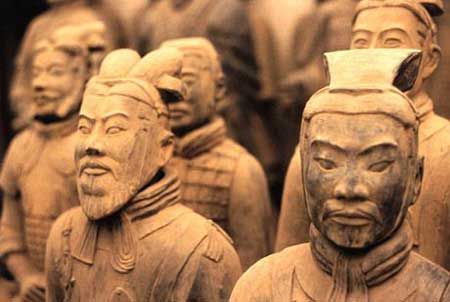兵马俑
The Terracotta Army is an impressive buried army located near the tomb of the first emperor of China. The complex, known as the Mausoleum of the First Qin Emperor 秦始皇陵 , is situated 31 km east of the city of Xi'an in Shaanxi Province. Construction began in 247 BC and took 39 years.
The Tomb of the First Emperor
The tomb of the first emperor is covered by a 115-meter-high tumulus and has not yet been opened. The Chinese government wants technology to be advanced enough to ensure that the contents (especially the mummy of the first emperor) will not be damaged. It is also necessary to ensure that the traps installed to protect the tomb do not pose a danger to excavators. We have an idea of the contents of the tomb from the description given by the famous historian Sima Qian:
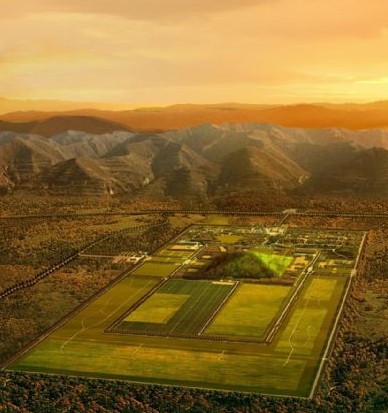 In the ninth month, Che Huang (Qin Shi Huang) was buried in Mount Li. From the beginning of his reign, Che Huang had Mount Li dug and arranged. Then, when he had united the entire empire in his hands, the workers sent there numbered more than seven hundred thousand; the ground was dug to the water; bronze was poured in and the sarcophagus was brought in; palaces, (buildings for) all administrations, wonderful utensils, jewels, and rare objects were transported and buried there and filled (the sepulcher). Artisans were ordered to make automatic crossbows and arrows; if anyone had wanted to make a hole and enter (the tomb), they would have suddenly shot at him. The hundred rivers, the Kiang, the Ho, and the vast sea were made with mercury; machines made it flow and passed it on to each other. Above were all the signs of heaven; below all the geographical layout. Torches were made with seal fat which were calculated not to go out for a long time. Eul-che (Qin Er Shi) said: The wives of the deceased emperor who had no sons should not be set free. He ordered that all should follow him in death; those who were killed were very numerous. When the coffin had been lowered, someone said that the workers and artisans who had made the machines and hidden the treasures knew all about it and that the great value of what had been buried would thus be divulged; when the funerals were over and the central path leading to the sepulcher had been concealed and blocked, the door at the outer entrance of this path was made to fall and all those who had been employed as workers or artisans to hide (the treasures) were locked in; they could not get out. Herbs and plants were planted so that (the tomb) would look like a mountain.
In the ninth month, Che Huang (Qin Shi Huang) was buried in Mount Li. From the beginning of his reign, Che Huang had Mount Li dug and arranged. Then, when he had united the entire empire in his hands, the workers sent there numbered more than seven hundred thousand; the ground was dug to the water; bronze was poured in and the sarcophagus was brought in; palaces, (buildings for) all administrations, wonderful utensils, jewels, and rare objects were transported and buried there and filled (the sepulcher). Artisans were ordered to make automatic crossbows and arrows; if anyone had wanted to make a hole and enter (the tomb), they would have suddenly shot at him. The hundred rivers, the Kiang, the Ho, and the vast sea were made with mercury; machines made it flow and passed it on to each other. Above were all the signs of heaven; below all the geographical layout. Torches were made with seal fat which were calculated not to go out for a long time. Eul-che (Qin Er Shi) said: The wives of the deceased emperor who had no sons should not be set free. He ordered that all should follow him in death; those who were killed were very numerous. When the coffin had been lowered, someone said that the workers and artisans who had made the machines and hidden the treasures knew all about it and that the great value of what had been buried would thus be divulged; when the funerals were over and the central path leading to the sepulcher had been concealed and blocked, the door at the outer entrance of this path was made to fall and all those who had been employed as workers or artisans to hide (the treasures) were locked in; they could not get out. Herbs and plants were planted so that (the tomb) would look like a mountain.
— Siman Qian, excerpt from The Historical Memoirs, translated and annotated by Édouard Chavannes
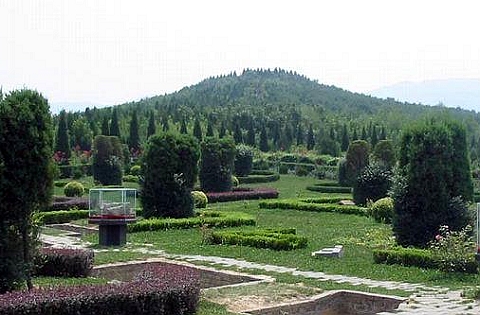
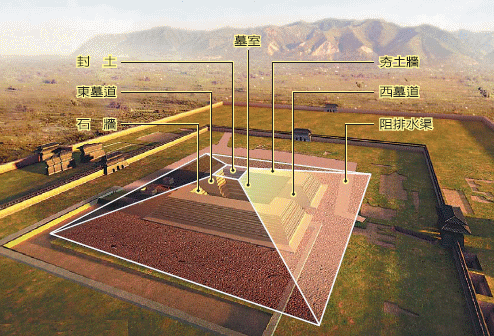
The Buried Army
The Terracotta Army is considered one of the greatest archaeological discoveries of the 20th century. It was farmers who, in 1974, made the first discoveries while digging a well. Different pits were uncovered over time, astonishing archaeologists who did not know where and when the discoveries would end. In total, 8 pits have been uncovered. The first pit contains the main army with more than 6000 large terracotta warriors. Each warrior's face is different. In the other pits, more warriors, infantrymen, archers, cavalrymen with their horses, chariots, and weapons are still found.
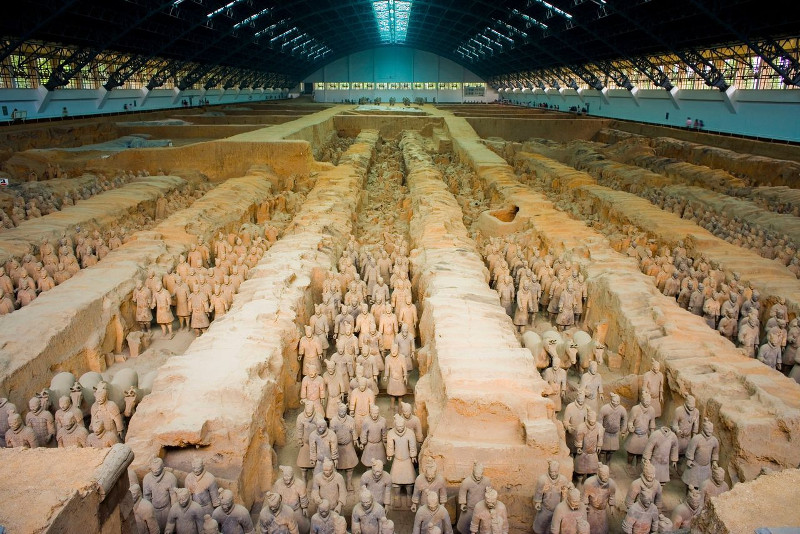
Chariot of the Terracotta Army:
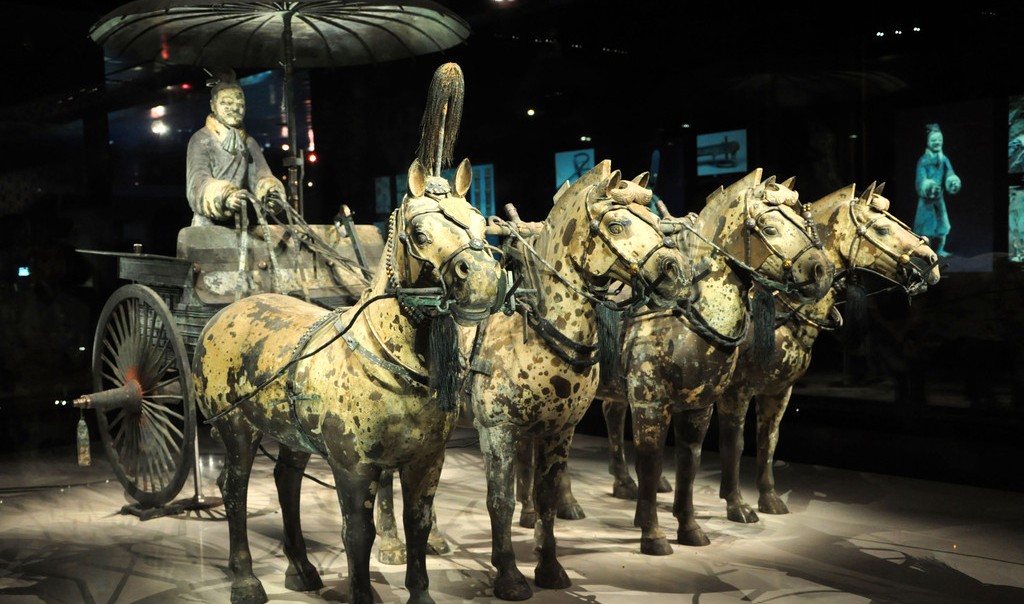
Soldiers of the Terracotta Army:
